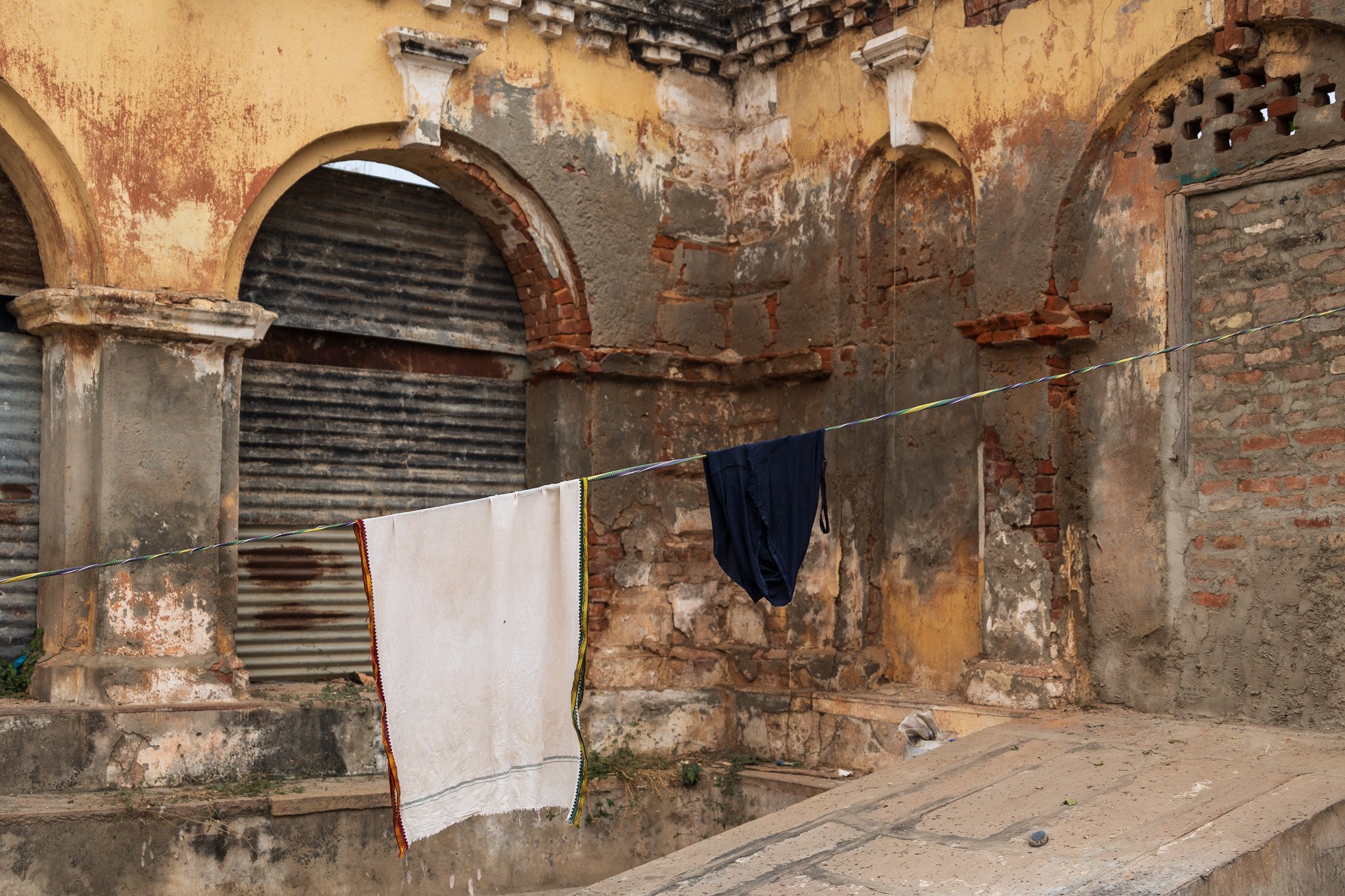On my second day at Nadesar Palace, I scheduled a visit to Ramnagar Fort.
Ramnagar Fort was built by Maharaja Balwant Singh in 1750 using cream coloured sandstone. It’s an example of Mughal style architecture, which most famously is depicted in the Taj Mahal. The typical architectural details include curvy balconies, towers, big courtyards, carved pillars and buttresses, and ornate carvings. The fort extends over 7.2 hectares along the eastern bank of the River Ganges, which feeds a moat surrounding the property to prevent enemy attack.
Entry to the fort is through what seems to be a large facade of a building, the fort is designed in a rectangular shape, with several courtyards and tunnels leading to the Ghats. The Fort contains various buildings, including the Royal Quarters that continue to serve as the residence for the current Maharaja, a temple, and a public hall that has been converted into a museum.
There is no entrance fee to access the fort itself, but there was a nominal fee to enter the museum. Just like many other places in India, the admission rates were different for locals and foreigners. For locals, it was 20 Indian Rupees, while foreigners had to pay 150 Rupees (approximately $5 Canadian Dollars).
My visit to the fort began by exploring the museum, which showcased a fascinating collection of items that belonged to the royal family. The displays included silver elephant saddles, antique guns, vintage furniture, extravagant royal costumes, jewellery, elegant clocks, clothing from different eras, and even vintage cars. The artifacts had historical significance and their value was evident, though I noticed the museum wasn't maintained to typical museum standards. It was a bit dusty and lacked proper curation, likely because the property was still under the care of the royal family and not the government of India.
Still, the fort itself had a certain charm that had remained intact over the years. The mighty fortifications were impressive, especially the portion that overlooked the river. The temples and other buildings added to the allure of the place, even if most of them were only visible from the outside.
One building within the fort caught my attention, featuring a pair of matching stone elephants standing over tigers. This scene immediately brought to mind Karl's account of being greeted by Bengal tigers at the palace's entrance. It was a poignant reminder of the past, and I couldn't help but feel relieved that such scenes no longer involved real tigers.
Comparing my experience to Karl's, I realized that my access was more limited. I didn't have the privilege of entering the Royal Quarters, nor did I have the opportunity to dine with the Maharaja. However, I took solace in the fact that my exploration of the former royal guest house, which was also my hotel, allowed me to come as close as possible to retracing Karl's journey. While some experiences were beyond my reach, I felt a sense of connection as I followed in his footsteps as closely as circumstances allowed.
But could I get even closer?
Stay tuned next week dear reader when Santa comes to Varanasi.
If you are new to the Karl Chronicles, get caught up on our expedition around the world! Start here with: 100 highlights from 100 Chronicles
Then get caught up on the rest of our journey, click here for more Karl Chronicles
The Karl Journey is registered as an official expedition with the Royal Geographical Society

















